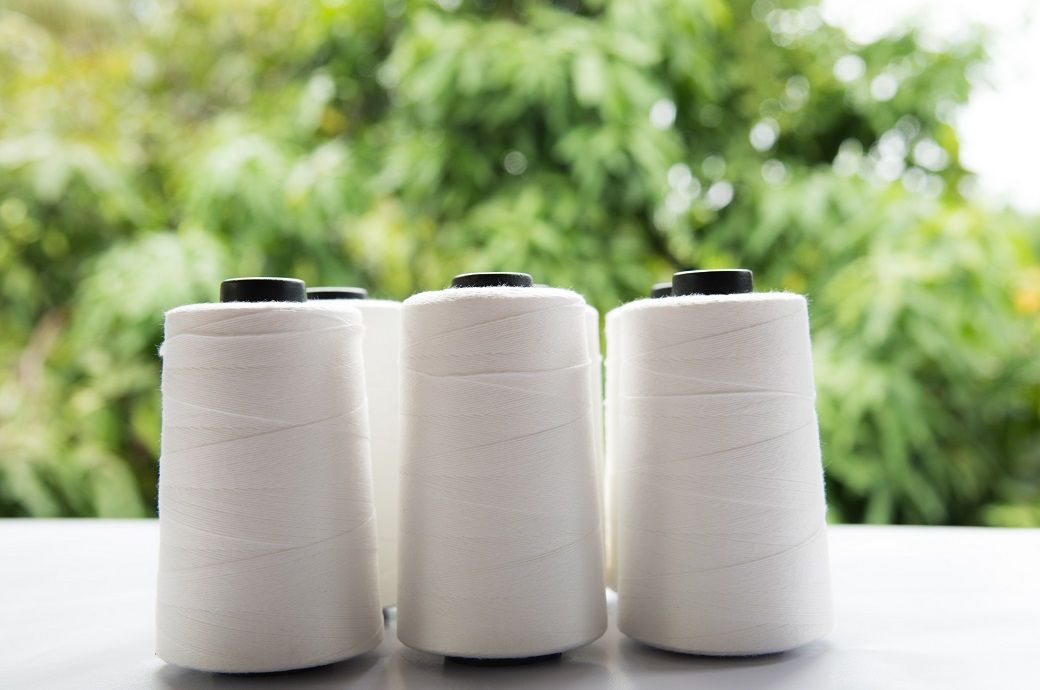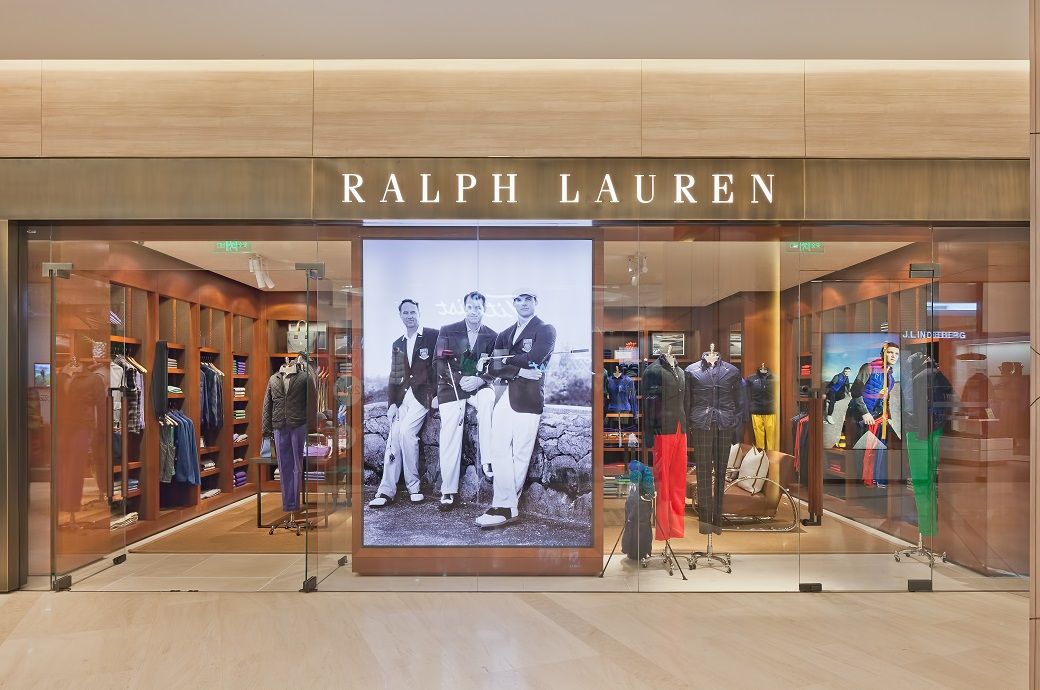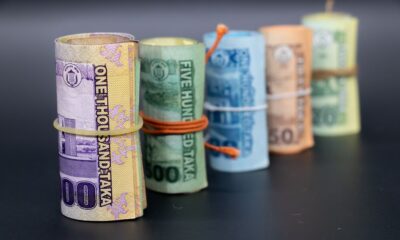Fashion
Payment crisis hits Indian MMF yarn market; viscose sees revival

In Ludhiana, buying remained limited due to payment constraints. Traders expect PC yarn demand to pick up soon with an increase in summer garment manufacturing. A Ludhiana trader told Fibre*Fashion, “PC and polyester yarn prices were unchanged as consumption patterns showed no shift. Slow payment flow is denting buying capacity, but it may improve once manufacturing activities resume after workers return from their native places.” Meanwhile, recycled polyester fibre gained ****;*–* per kg due to a shortage of PET bottles, the primary raw material.
In Ludhiana, ** count PC combed yarn (**/**) traded at ****;***–*** (~$*.**–*.**) per kg (GST inclusive); ** count PC carded yarn (**/**) at ****;***–*** (~$*.**–*.**) per kg (GST inclusive); ** recycled polyester yarn at ****;***–*** (~$*.**–*.**) per kg (GST extra); ** count virgin polyester spun at ****;***–*** (~$*.**–*.**) per kg (GST inclusive); recycled polyester fibre (PET bottle fibre) at ****;**–** (~$*.**–*.**) per kg and virgin polyester fibre at ****;**.** (~$*.**) per kg.
Fashion
US’ Ralph Lauren’s Q2 FY26 revenue surges 17% on strong global demand

The gross profit of the company reached $1.37 billion, with gross margin expanding 100 basis points (bps) to 68 per cent, driven by higher average unit retail (AUR), favourable product mix, and lower cotton costs. These gains offset inflationary and tariff-related pressures.
Ralph Lauren Corporation has reported better-than-expected Q2 FY26 results, with revenue rising 17 per cent YoY to $2 billion, driven by double-digit growth across all regions and strong DTC demand.
Gross margin expanded 100 bps to 68 per cent, while adjusted operating margin rose 270 bps to 14.1 per cent.
EPS increased 49 per cent to $3.79.
The company raised its FY26 revenue and margin outlook.
The operating income rose to $246 million, translating to a 12.2 per cent operating margin on a reported basis. Adjusted operating income stood at $283 million, with a margin of 14.1 per cent, up 270 basis points from last year. Europe led margin improvement with a 360-basis-point increase, while North America and Asia improved by 290 and 230 basis points respectively, Ralph Lauren said in a press release.
The operating expenses totalled $1.1 billion, up 15 per cent YoY. The company maintained strong cost discipline, with adjusted operating expenses rising 13 per cent and the expense ratio improving to 53.9 per cent from 55.5 per cent.
The earnings per diluted share climbed 44 per cent to $3.32 on a reported basis and 49 per cent to $3.79 on an adjusted basis, excluding restructuring and other charges. This compares with $2.31 reported and $2.54 adjusted in Q2 FY25. Net income totalled $207 million, while adjusted net income reached $237 million.
The revenue in North America grew 13 per cent to $832 million. Comparable store sales rose 13 per cent, driven by a 12 per cent increase in physical retail and a 15 per cent surge in digital commerce. Wholesale revenue also improved by 13 per cent.
Revenue in Europe advanced 22 per cent to $688 million on a reported basis and 15 per cent in constant currency. Comparable store sales increased 10 per cent, including 8 per cent growth in physical stores and 17 per cent in online sales. Wholesale sales jumped 26 per cent.
Revenue in Asia climbed 17 per cent to $446 million, or 16 per cent in constant currency. Comparable store sales improved 16 per cent, with brick-and-mortar up 14 per cent and digital commerce soaring 36 per cent. China was a key growth driver, posting over 30 per cent revenue growth, maintaining the pace seen in the first quarter.
The company continued to strengthen its brand equity, adding 1.5 million new customers through its DTC channels and achieving high-single-digit growth in social media followers to 67 million globally.
The company’s ‘always-on’ marketing approach drove robust consumer engagement, with activations around key global events such as Wimbledon, the US Open, and the Ryder Cup. The brand also drew attention through the Spring 2026 Women’s Collection show in New York, an immersive Goodwood Revival experience in England, and prominent celebrity moments featuring Taylor Swift, Travis Kelce, and Selena Gomez, the release said.
Core categories such as Women’s Apparel, Outerwear, and Handbags grew at strong double-digit rates, outpacing total company growth. The company launched several high-impact initiatives, including the Polo Ralph Lauren for Oak Bluffs collection in partnership with Morehouse and Spelman Colleges, the Ralph’s Club New York fragrance campaign featuring Usher, and an AI-powered styling tool ‘Ask Ralph’, showcasing its blend of heritage and innovation.
The brand furthered its ‘Win in Key Cities’ strategy by opening 38 new owned and partner-operated stores during the quarter, including new locations in Munich (Germany), Plano (Texas, US), Hangzhou (China), and Nagoya (Japan). It also completed the purchase of its Newbury Street store in Boston, reinforcing its long-term retail footprint.
Ralph Lauren ended the quarter with $1.6 billion in cash and short-term investments and $1.2 billion in total debt. Inventory stood at $1.3 billion, up 12 per cent YoY and aligned with demand trends. The company also retired $400 million in senior notes due in 2025 and repurchased $63 million of Class A common stock in Q2, totalling $313 million year-to-date (YTD).
So far in FY26, Ralph Lauren has returned approximately $420 million to shareholders through dividends and share buybacks.
“We are off to a strong start in the execution of our Next Great Chapter: Drive strategic plan introduced at our Investor Day in September, with second quarter performance outpacing our expectations across geographies, channels and consumer segments,” said Patrice Louvet, president and chief executive officer (CEO) at Ralph Lauren. “Our iconic brand and timeless products continue to resonate with consumers around the world, across generations and cultures, and we are reinforcing our inclusive luxury lifestyle position with disciplined investments to drive sustainable long-term growth and value creation well beyond this fiscal year.”
Ralph Lauren has raised its FY26 guidance, as the company now expects revenue growth of 5–7 per cent on a constant currency basis. The operating margin expansion of 60–80 basis points (bps), driven by cost efficiency and margin leverage. Foreign currency to provide a 30–50 bps tailwind to gross and operating margins.
For the third quarter, the company projects mid-single-digit revenue growth in constant currency, with operating margin expected to expand 60–80 basis points (bps).
“As we continue to navigate a highly dynamic global operating environment with agility, we are encouraged by our brand’s continued momentum through the start of the important Fall/Holiday season, enabling us to once again raise our fiscal 2026 outlook,” added Louvet.
Fibre2Fashion News Desk (SG)
Fashion
Tariffs pushing Myanmar’s RMG sector to the brink?

Myanmar’s garment industry, once the beating heart of its export economy, is now reportedly reeling under the weight of US tariffs.
A steep 40 per cent tariff on Myanmar’s garment exports has made its products far less competitive than those from Bangladesh, Cambodia, Indonesia, etc, triggering a sharp decline in US orders.
Beyond tariffs, Myanmar’s apparel sector also faces growing headwinds from political instability, sanctions, poor infrastructure, and global scrutiny over labour rights.
The 40 per cent tariff, slapped on Myanmar, marking a slight reduction from an earlier proposed 44 per cent, has made its products far less competitive, particularly in the face of rising competition from countries like Vietnam, Bangladesh, Cambodia, Indonesia, Malaysia, etc, which enjoy lower—or in some cases, no—tariffs.
For an industry that has already been struggling to stay afloat due to various reasons, the new tariff has come as a hammer blow, compounding an already fragile situation, as per many within the industry.
It may be mentioned here that political instability, for long, remained a major concern area, with the military-led government facing growing international condemnation and sanctions.
The country also reportedly suffers from poor infrastructure, power outages, and limited access to financing, all of which make it a difficult place to do business. On top of that, questions around labour rights and corporate governance are also putting Myanmar’s garments on the radar of the increasingly discerning Western consumers.
In Europe, especially in markets like Germany and the UK, there is reportedly a growing movement to exclude Myanmar-made products due to concerns over labour practices and human rights, even as the International Labour Organization (ILO) also invoked Article 33—its most serious enforcement measure—for Myanmar’s alleged failure to comply with international labour standards.
And now there’s the additional 40 per cent tariffs imposed by the US. The result, as industry insiders claim, notable reduction in fresh orders, pushing factories to downsize, cut shifts, lay off workers, and factory closures in many cases.
In Yangon’s industrial zones, the slowdown is palpable. As per reports, at least six factories have shut down since August, while many others are operating at reduced capacity to survive the downturn.
The Myanmar Garment Manufacturers Association (MGMA) reportedly revealed that by August, 56 of its 589 member factories had suspended operations entirely, while the Federation of General Workers Myanmar (FGWM) has reportedly held the US tariff responsible for triggering the factory closures, pointing out that the increased costs have made it impossible for producers to remain viable.
The ripple effects are hitting the workforce hardest—particularly women, who make up the vast majority of the garment sector’s employees. For years, the industry has been one of the few reliable sources of income and empowerment for women in Myanmar. Now, thousands are reportedly finding themselves out of work as factories shutter or scale back, and those still employed are facing shorter working hours, slashed overtime, and shrinking wages.
So, even if the sector remains a vital part of the country’s economy, with every factory that shuts down and with every worker who loses their job, Myanmar’s path back to recovery seems increasingly difficult.
Fibre2Fashion News Desk (DR)
Fashion
US brand Allbirds’ gross margin drops to 43.2% in Q3 FY25

The decline in gross margin primarily reflects a higher mix of digital and international distributor sales, as well as increased duties in the US business, which offset higher average selling price.
Allbirds reported Q3 FY25 net revenue of $33 million, down 23.3 per cent y-o-y, with gross profit of $14.2 million and a 43.2 per cent margin, down 120 bps.
Declines were driven by international distributor transitions, retail closures, and higher duties.
SG&A fell to $21.7 million.
The company focuses on cost reduction, liquidity, and growth initiatives.
In the third quarter of 2025, net revenue decreased 23.3 per cent to $33 million compared to $43 million in the third quarter of 2024. The year-over-year decrease is primarily attributable to structural changes, including impacts from international distributor transitions and planned retail store closures, the company said in a press release.
Selling, general, and administrative expense (SG&A) was $21.7 million, or 65.7 per cent of net revenue, compared to $31 million, or 72 per cent of net revenue in the third quarter of 2024. The decrease is primarily attributable to lower personnel expenses, occupancy costs, stock-based compensation expenses, and depreciation and amortisation expenses.
“We’re pleased to deliver third quarter results in line with our expectations, highlighted by a robust flow of new product introductions – many of which met with strong customer response,” said Joe Vernachio, CEO. “Entering the final months of the year, we will continue to support our product engine with compelling marketing content to capture consumer mindshare and reignite growth. Throughout the holiday season, we will be spotlighting gifting ideas and emphasising Allbirds’ core principles of comfort, style and sustainability.”
Net revenue in the first nine months of 2025 decreased 21.7 per cent to $104.8 million compared to $133.9 million in the first nine months of 2024. The year-over-year (y-o-y) decrease is primarily attributable to structural changes, including impacts from planned retail store closures and international distributor transitions.
Gross profit in the first nine months of 2025 totalled $44.8 million compared to $63.6 million in the first nine months of 2025, while gross margin declined to 42.7 per cent in the first nine months of 2025 versus 47.5 per cent in the same period a year ago. The decline in gross margin is primarily due to channel mix, with a lower percentage of sales coming from the retail business and a higher percentage coming from its digital and distributor channels, as well as increased promotional activity and higher inventory adjustments.
“Our teams are focused on accelerating progress under our turnaround in the quarters ahead,” added Vernachio. “At the same time, we are taking definitive steps to further reduce costs, enhance liquidity, and pursue value-creating opportunities.”
Fibre2Fashion News Desk (RR)
-

 Tech1 week ago
Tech1 week agoBlood Tests for Alzheimer’s Are Here
-

 Business1 week ago
Business1 week agoSetback for expatriates? Delhi HC upholds mandatory EPFO membership; what this means for foreign staff – The Times of India
-

 Business1 week ago
Business1 week agoGST rationalisation impact: Higher RBI dividend expected to offset revenue shortfall; CareEdge flags tax pressure – The Times of India
-

 Fashion1 week ago
Fashion1 week agoGermany’s Adidas achieves highest-ever quarterly sales in Q3 2025
-

 Politics1 week ago
Politics1 week agoTrump links Republicans’ election setbacks to record US govt shutdown
-

 Tech1 week ago
Tech1 week agoZohran Mamdani Just Inherited the NYPD Surveillance State
-

 Fashion1 week ago
Fashion1 week agoBangladesh Bank allows foreign currency-taka swap facility for dealers
-

 Tech1 week ago
Tech1 week agoThe Security Interviews: Colin Mahony, CEO, Recorded Future | Computer Weekly


















